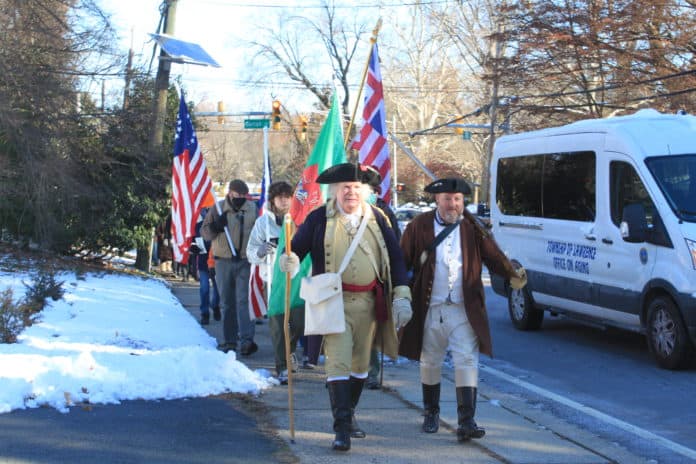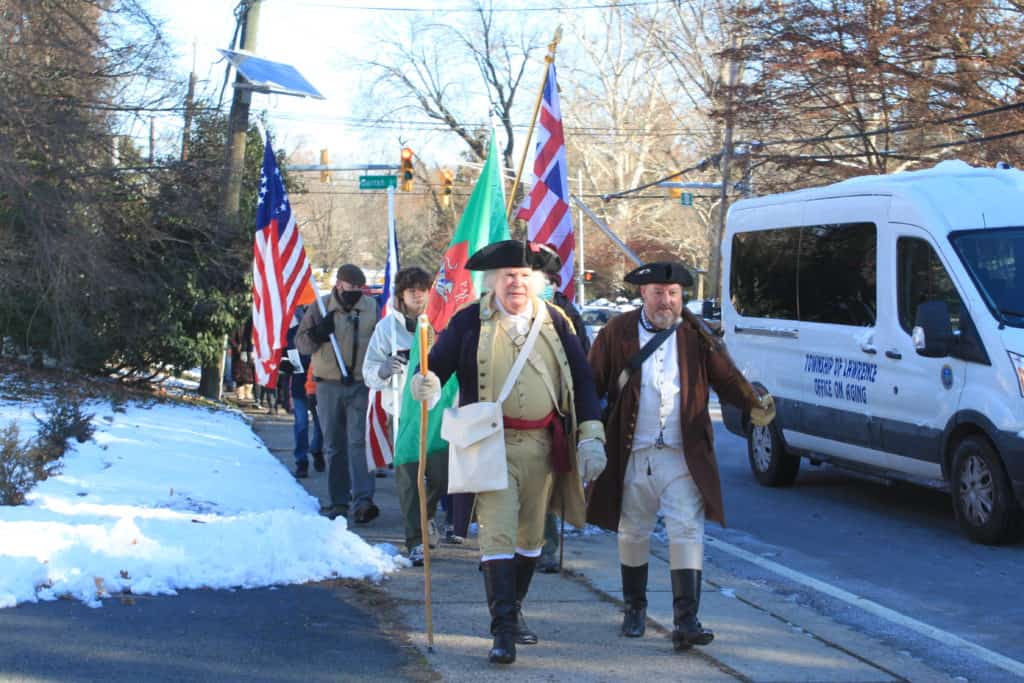

The 62nd annual re-enactment of Col. Edward Hand’s delaying tactics, which held off British and Hessian troops on their way to what would become known as the Second Battle of Trenton, will kick off at 10 a.m. Jan. 6 at the Lawrence Township Municipal Building.
Township resident William Agress will portray Col. Hand – right down to the blue-and-buff uniform worn by the Revolutionary War soldier – during the Col. Edward Hand Historic March.
The event is a re-enactment of the American patriots’ delaying tactics before the Second Battle of Trenton on Jan. 2, 1777, Agress said. The event was created by the late Robert Immordino, who was the official Lawrence Township historian.
The real Col. Hand and his band of Pennsylvania riflemen delayed the advance of British and Hessian troops on their way to retake Trenton from the Americans during the afternoon of Jan. 2, 1777. The battle took place later in the day.
Before stepping off to follow in the footsteps of Col. Hand and the 1st Pennsylvania Rifle Regiment, Mark Sirak, a resource interpretive specialist at Washington Crossing State Park, will talk about what is happening at the park, such as a new visitor center.
Sirak also will talk about the “Ten Crucial Days” campaign during the American Revolutionary War. It is the 10-day period between the First Battle of Trenton on Christmas Day 1776 and the Battle of Princeton on Jan. 3, 1777. The American victories turned the tide for the patriot cause.
Then, the marchers will step off and begin the trek toward Trenton. The marchers typically include the Township Council, former mayors, historic re-enactors, Boy Scouts and Girl Scouts, and other history buffs.
The band of marchers will pass the site of two skirmishes between the 1st Pennsylvania Rifle Regiment commanded by Col. Hand, and the British and Hessian troops. The first skirmish occurred on the banks of Five Mile Run, also known as the Little Shabakunk Creek, on Route 206 near Darrah Lane.
The second skirmish occurred on the banks of the Shabakunk Creek, near Notre Dame High School. The marchers will stop there, marking the end of the Col. Hand historic march re-enactment.
The marchers will walk to the nearby Lawrence Township Anne Demarais Nature Center at 481 Drexel Ave. for light refreshments. The nature center is close to Notre Dame High School. The Lawrence Township van will take them back to the municipal building.
Now, back to history and what led to Col. Hand’s delaying tactics.
Between August and November 1776, Gen. George Washington and his troops suffered a series of defeats by the British, Agress said. The rebels retreated through Maidenhead – as Lawrence Township was originally known – and crossed the Delaware River at Trenton.
On Christmas Day 1776, Gen. Washington and 2,400 soldiers crossed the Delaware River from Pennsylvania and marched to Trenton, where they routed the Hessian troops in the First Battle of Trenton, Agress said.
Several days after the famous battle, Washington and his troops crossed the Delaware River again and stopped in Trenton. The British and Hessian troops were dispatched from Princeton to Trenton to retake the small town from the Americans.
Despite the delaying tactics of Col. Hand and his soldiers, the British and Hessian troops reached Trenton at dusk on Jan. 2, 1777, engaging the Americans in the Second Battle of Trenton.
The Americans retreated and crossed a bridge over the Assunpink Creek. Their British and Hessian pursuers tried three times to cross the bridge, but they were turned back each time. The British called off the fight for the night and planned to continue it the next day.
But during the night and into the early morning of Jan. 3, 1777, Gen. Washington led his soldiers around the British and Hessian encampment and followed a back road to Princeton. The Americans surprised the British troops stationed there in what became known as the Battle of Princeton – and a turning point in the American Revolutionary War.

